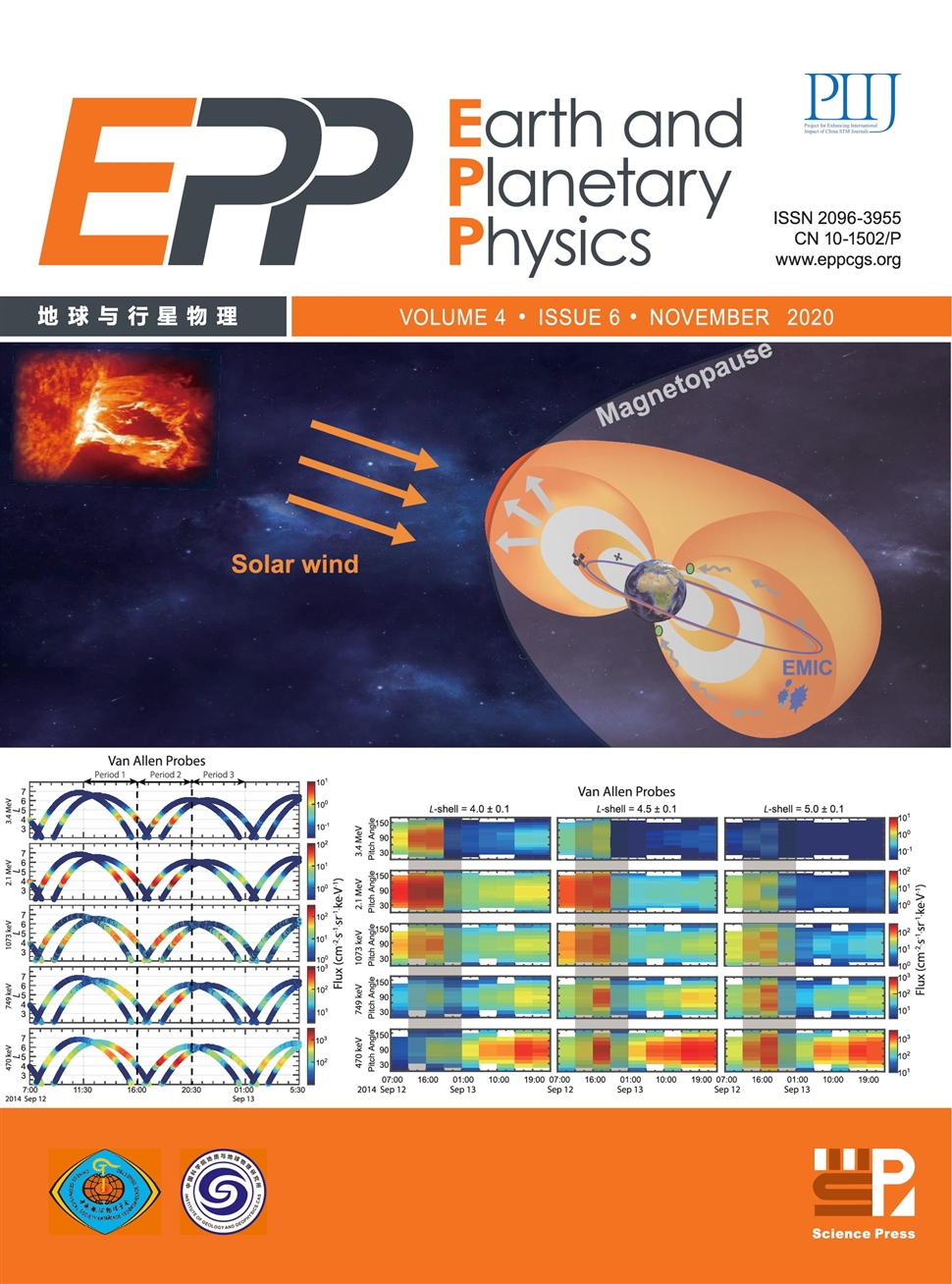Signature of helium rain and dilute cores in Jupiter’s interior from empirical equations of state
作者:DongDong Ni
摘要:Measurements of Jupiter’s gravity field by Juno have been acquired with unprecedented precision, but uncertainties in the planet’s hydrogen–helium equation of state(EOS) and the hydrogen–helium phase separation have meant that differences remain in the interior model predictions. We deduce an empirical EOS from Juno gravity field observations in terms of the hydrostatic equation and then investigate the structure and composition of Jupiter by comparison of the empirical EOS with Jupiter’s adiabats obtained from the physical EOS. The deduced helium mass fraction suggests depletion of helium in the outermost atmosphere and helium concentration in the inner molecular hydrogen region, which is a signature of helium rain in Jupiter’s interior. The deduced envelope metallicity(the heavy-element mass fraction) is as high in the innermost envelope as 11–13 times the solar value. Such a high metallicity provides sharp support to the dilute core model with the heavy elements dissolved in hydrogen and expanded outward. No matter how the core mass is varied, the empirical EOS derived from the two-layer interior model generally suggests higher densities in the innermost envelope than does the best-fit Jupiter’s adiabat;this result is, again, a signature of dilute cores in Jupiter’s interior. Moreover, no matter the core mass,the empirical EOS is found to exhibit an inflexion point in the deep interior, around 10 Mbar, which can be explained as the combined effect of helium concentration in the upper part and dilute cores in the lower part.
发文机构:State Key Laboratory of Lunar and Planetary Sciences Institute for Planets and Exoplanets
关键词:JupiterinteriorabundancesinteriorsGEOPHYSICS
分类号: O57[理学—粒子物理与原子核物理][理学—物理]
- Inertial gravity waves observed by a Doppler wind LiDAR and their possible sources
- Anomaly distribution of ionospheric total electron content responses to some solar flares
- Editorial Committee of Earth and Planetary Physics
- Mars Ion and Neutral Particle Analyzer (MINPA) for Chinese Mars Exploration Mission (Tianwen-1): Design and ground calibration
- The source of tropospheric tides
- Morphology and possible origins of the Perm anomaly in the lowermost mantle of Earth
- Characteristics of the quasi-16-day wave in the mesosphere and lower thermosphere region as revealed by meteor radar,Aura satellite,and MERRA2 reanalysis data from 2008 to 2017
- An ICME impact on the Martian hydrogen corona
- Treatment of discontinuities inside Earth models:Effects on computed coseismic deformations
- Recent investigations of the near-Mars space environment by the planetary aeronomy and space physics community in China


